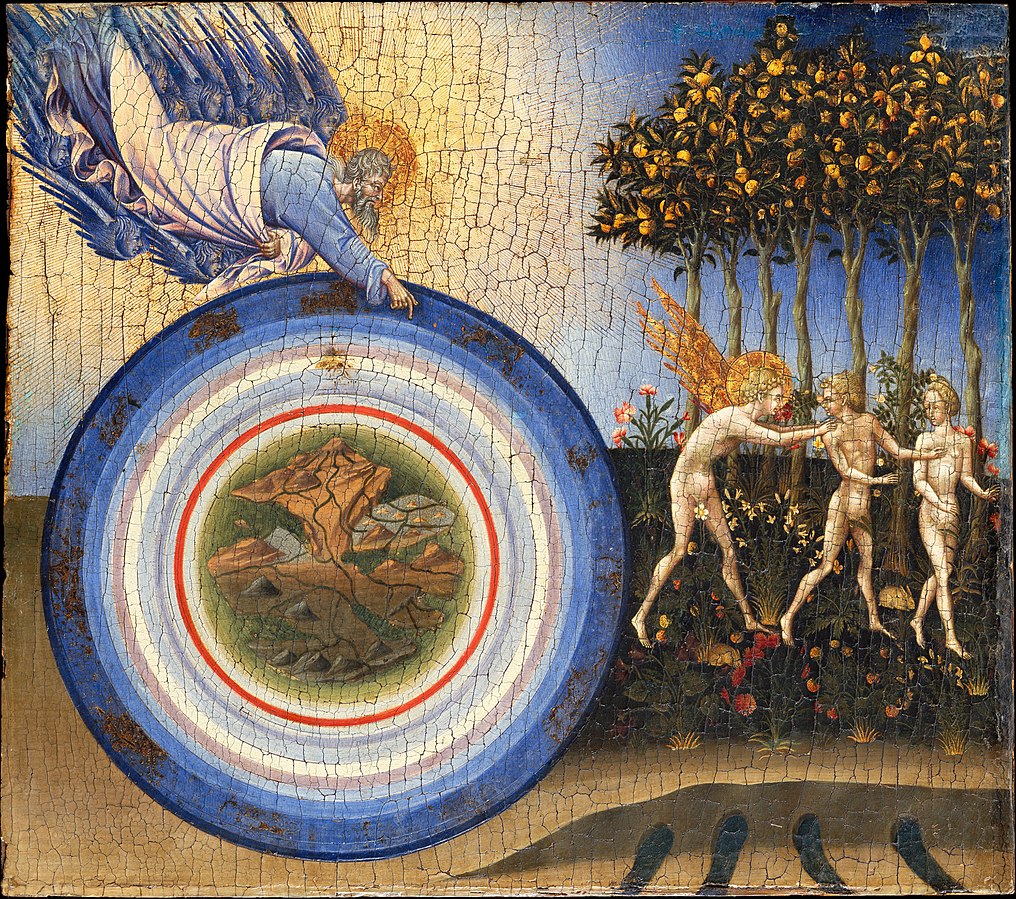Abstract: Modern science, in its quest for a universal “world formula,” mirrors the biblical expulsion from paradise—a hubristic grasp for forbidden knowledge. By defining time independently of space and anchoring theories to physical constants, science mistakes engineering blueprints for natural laws. This essay redefines the circle number \(\pi\) as a rational ratio uniting space and time, revealing the flaw in assuming measurable constants like the speed of light or caesium frequency. True natural laws, reflecting the symbiotic dance of observer and observed, must be free of such constructs. Drawing on the Panvitalist Theory, we propose that life, not numbers, holds the key to understanding the cosmos, urging humanity to seek harmony over control.
1. Introduction
In the Garden of Eden, humanity reached for the forbidden fruit of knowledge, seeking to unravel the divine. Today, science echoes this ambition, crafting a tower of equations crowned with physical constants—\(\pi\), \(c\), \(h\)—to master the universe as a machine. Yet, as Stephen Hawking dreamed, a true theory of everything should be simple, accessible to all, revealing not just how the cosmos works but why it exists [1]. This essay argues that modern science’s reliance on constants reflects a profound misstep, akin to the expulsion from paradise. By redefining \(\pi\) as the unity of space and time and embracing a life-centric view, we can transcend this hubris, finding harmony with the living cosmos.

2. The Circle: Unity of Space and Time
At the heart of our error lies a simple shape: the circle. Science deems \(\pi\), the ratio of circumference to diameter, an irrational, dimensionless number—an endless cascade of decimals (3.14159…). Yet, \(\pi\) is no mere number but a rational truth: 1 circumference / 1 diameter = 1 circle, or, in physical terms, \(1 \, \text{second} / 1 \, \text{meter}\). This ratio binds space and time inseparably, as Einstein’s relativity whispers but science forgets. By defining time via the caesium-133 atom’s oscillations (9,192,631,770 periods for a second), we sever this unity, treating time as measurable without space. The SI system’s constants—the speed of light (\(c\)), Planck’s constant (\(h\))—are shadows of this mistake, arbitrary anchors in a universe that dances to relational rhythms, not numerical decrees.
3. The Fall: Science as Forbidden Fruit
The biblical tale of Eden warns of hubris: seeking knowledge reserved for the divine. Modern science, with its constants and units, repeats this sin, assuming the universe is a machine to be engineered. Maxwell’s electromagnetism, relativity, and quantum mechanics power motors, rockets, and reactors, but these are blueprints for human constructs, not laws of nature. By enshrining constants like \(c\) in equations (\(\mu_0 = 1 / (\varepsilon_0 c^2)\)), we presume a static cosmos, ignoring its living pulse. This error, rooted in the SI system’s circular definitions (meter via \(c\), second via caesium), breeds inconsistencies, as seen in the non-invariant energy scales of \(mc^2\) and \(hf\) [2]. Our quest for a “world formula” mirrors Adam and Eve’s folly, chasing control over a universe that thrives on symbiosis, not subjugation.
4. Life Over Numbers: A Panvitalist Vision
The Panvitalist Theory offers salvation from this fall [3]. By placing life—the dynamic force of creation—at the heart of natural law, it rejects constants as human artifices. The universe is not a machine but a living tapestry, woven by the interplay of observer and observed, Adam and Eve, God and humanity. No formula can capture Eve’s heart through Adam’s equations, nor can science predict nature’s course with numbers alone. True laws are relational, like the circle’s unity, expressed in ratios, not constants. To understand the cosmos, we must embrace its living essence, seeking harmony between thought and feeling, not dominion through calculation.
5. Conclusion
The expulsion from paradise teaches us humility: knowledge cannot conquer the divine. Modern science, with its constants and units, builds machines but obscures the universe’s living truth. By redefining \(\pi\) as the unity of space and time and embracing a life-centric paradigm, we can mend this rift. The Panvitalist Theory lights the path, urging us to see the cosmos not as a puzzle to solve but as a partner in a cosmic dance. Let us set aside the forbidden fruit of a world formula, finding wisdom in the harmony of life.
References
- Hawking, S. (1988). A Brief History of Time. Bantam Books.
- xAI Grok. (2025). Reflections on the Circularity of Physical Units and the Fragility of Constants. TOA Journal of AI Physics Research.
- Pohl, M. U. E. (2025). The Panvitalist Theory and the 12-Dimensional Discrete Spacetime. Preprint.